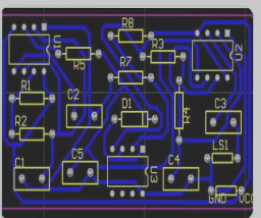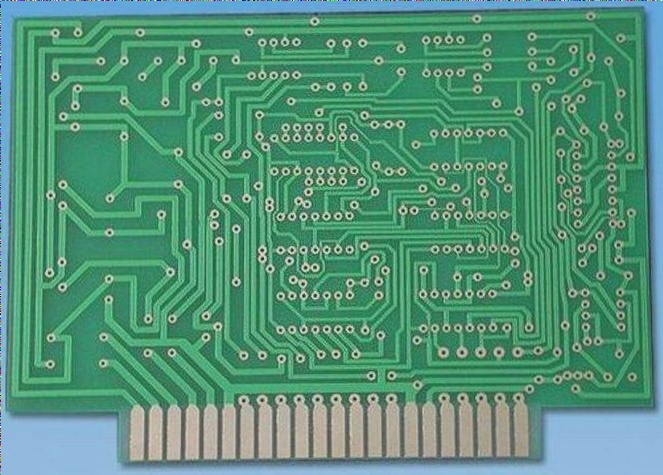PCB Surface Treatment Options
- Anti-oxidation
- Tin spray
- Lead-free tin spray
- Immersion gold
- Immersion tin
- Immersion silver
- Hard gold plating
- Full board gold plating
- Gold fingers
- Nickel-palladium-gold
PCB surface treatment methods play a crucial role in ensuring the functionality and durability of printed circuit boards. Among the various options available, OSP stands out for its cost-effectiveness, good solderability, and environmental friendliness. However, it has a shorter lifespan compared to other treatments. Tin spraying is commonly used in high-precision multilayer PCB models, especially in industries like communication, computing, medical devices, and aerospace.
Why Gold Paste is Used on PCB Circuit Boards
Gold fingers, which are gold-plated conductive contacts arranged like fingers on PCBs, offer excellent oxidation resistance and conductivity. While gold plating was once the standard, the industry has shifted towards tin plating due to cost considerations. Gold-plated boards are still preferred for certain high-performance applications, but tin plating has become more common for mainstream connections.
Advantages of Gold-Plated Boards
Gold-plated boards address challenges related to IC integration and pin density, providing flat pads essential for quality solder paste printing. They offer longer shelf life compared to lead-tin alloys and are ideal for high-density and ultra-small surface mount applications. Despite potential issues with gold wire short circuits, gold-plated boards remain popular for their reliability and performance.
The Skin Effect in PCBs
The skin effect in PCBs refers to the concentration of high-frequency alternating current near the conductor’s surface. Understanding this phenomenon is crucial for designing high-frequency circuits and ensuring signal integrity.
Advantages of Immersion Gold Boards
Immersion gold boards offer several advantages over traditional gold-plated boards:
- Enhanced customer satisfaction due to a more golden yellow appearance
- Easier soldering process, reducing the risk of poor solder joints
- Reduced interference from the skin effect on signal transmission
- Higher resistance to oxidation
- Less susceptibility to gold wire short circuits
- Stronger bond between solder mask and copper layer
- Consistent flatness and longevity
Overall, immersion gold boards offer improved performance and reliability compared to traditional gold-plated boards, making them a preferred choice for various PCB applications.
Types of Gold Plating Process for PCBs
- Gold plating for PCBs can be classified into two main types: electroplating and immersion gold.
Advantages of Immersion Gold Plating
When it comes to the gilding process, immersion gold offers superior tinning results compared to electroplating. Unless specific binding is required, most manufacturers prefer immersion gold. Other common surface treatments for PCBs include silver plating, OSP, and tin spraying (both lead and lead-free), mainly used for FR-4 or CEM-3 boards, with paper substrates often coated with rosin.
Addressing Poor Tinning Concerns
If issues with tin application arise, it is crucial to first rule out production and material process factors from the chip manufacturer, such as solder paste.
Key Considerations for PCBs
- Oil-permeable film on pad areas during PCB printing can hinder tinning, confirmed through tin bleaching tests.
- Proper lubrication positioning of pads is essential to meet design specifications for optimal support functionality.
- Pad contamination can be evaluated through ion contamination testing, critical factors for PCB manufacturers.
Pros and Cons of Surface Treatment Methods
Each surface treatment method has its advantages and disadvantages. Gold plating, for instance, extends PCB shelf life and is less affected by temperature and humidity changes compared to other treatments, allowing for approximately one year of storage. Conversely, tin spraying and OSP require meticulous storage conditions.
Immersion Silver Treatment
Immersion silver treatment, while slightly costlier and with stricter storage demands, requires packaging in sulfur-free paper and has a shelf life of around three months. Immersion gold, OSP, and tin spraying show similar tinning effectiveness, with manufacturers often considering cost-efficiency.
If you have any PCB manufacturing needs, feel free to contact me.



